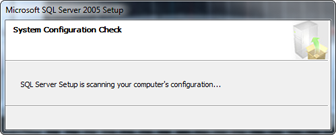

SQL Server 2014 SP1 contains fixes provided in SQL Server 2014 CU 1 up to and including CU 5, as well as a rollup of fixes previously shipped in SQL Server 2012 SP2. SQL Server 2014 Service Pack 2 Release Information.SQL Server 2014 SP2 Semantic Language Statistics.SQL Server 2014 SP2 Reporting Services Add-in for Microsoft Sharepoint.SQL Server 2014 Service Pack 2 is now available.Download Service Pack 2 for Microsoft SQL Server 2014.Support for UTF-8 in BULK INSERT and BCP - Support for export and import of data encoded in UTF-8 character set is now enabled in BULK INSERT and BCP.ĭownload pages and more information for SP2.This fix helps correlating queries between XE and DMVs. This improvement introduces new XEvent action/filter columns equivalent to query_hash and query_plan_hash except when they are defined as INT64. Since SQL server does not have "unsigned bigint", casting does not always work. DMV defines them as varbinary(8), while XEvent defines them as UINT64.

Better correlation between diagnostics XE and DMVs - Query_hash and query_plan_hash are used for identifying a query uniquely.The Xevent call stack now include modules names and offset instead of absolute addresses.Use a new Errorlog message for the number of tempdb files, and tempdb data file changes, at server startup. Hash Warning and Sort Warnings now have additional columns to track physical I/O statistics, memory used, and rows affected. Query execution diagnostics for tempdb spill Optimizes collecting per-operator query execution statistics such as actual number of rows.ĭevelopers Choice: Query progress - anytime, anywhereĪctual rows read are now reported in the query execution plans to help improve query performance troubleshooting. Query execution lightweight per-operator profiling You can leverage diagnostic hints while running queries by capping their memory grants to prevent memory contention. This is functionally equivalent to DBCC INPUTBUFFER.Īllows a table that's included as an article in transactional replication publication to be dropped from the database and the publication.ĭetermine whether Instant File initialization (IFI) is in effect at the SQL Server service startup. New DMF sys.dm_db_incremental_stats_properties expose information per-partition for incremental statistics.ĭMF for retrieving input buffer in SQL ServerĪ new DMF for retrieving the input buffer for a session/request (sys.dm_exec_input_buffer) is now available. Cloned databases are not meant to be used in production environments. Use the new DBCC command to troubleshoot existing production databases by cloning the schema, metadata, and statistics but without the data. New AlwaysON XEvents and performance counters to improve diagnostics when troubleshooting latency issues with AlwaysON.Ī new stored procedure sp_flush_CT_internal_table_on_demand cleans up change tracking internal tables on demand. Improved Always On Availability Group Lease Timeout DiagnosticsĪlwaysON XEvents and performance counters Supportability and diagnostics improvements in SP2 FeatureĪdded new logging capability for Lease Timeout messages so that the current time and the expected renewal times are logged. Spatial performance improvements in SQL Server 20 Significant improvement in spatial query performance. Removes the need for spinlock for SOS_RWLock and instead uses lock-free techniques similar to in-memory OLTP. This improvement is useful to run DBCC CHECKDB with a MAXDOP setting other than the sp_configure value. This enhancement eliminates the need of Trace Flag 8048 post SQL 2014 SP2. You can automatically configure Soft NUMA on systems reporting 8 or more CPUs per NUMA node.Įnables SQL Server Buffer Pool to scale beyond 8 TB.ĭynamically partition memory object based on number of nodes and cores. Performance and scalability improvements in SP2 Feature It contains improvements centered around performance, scalability, and diagnostics based on the feedback from customers and the SQL community. SQL Server 2014 SP2 contains rollups of released hotfixes for SQL Server 2014 SP1 CU7. This article describes known issues with releases, including related service packs.


 0 kommentar(er)
0 kommentar(er)
